Traditional Welsh Cakes
This post may contain affiliate links. See my disclosure policy.
Unforgettably flaky, tender, almost melt-in-your-mouth texture that’s punctuated with sweet currants and laced with a wonderful hint of mace, these Welsh cakes are simply irresistible! A thoroughly authentic Welsh Cakes recipe from generations past.
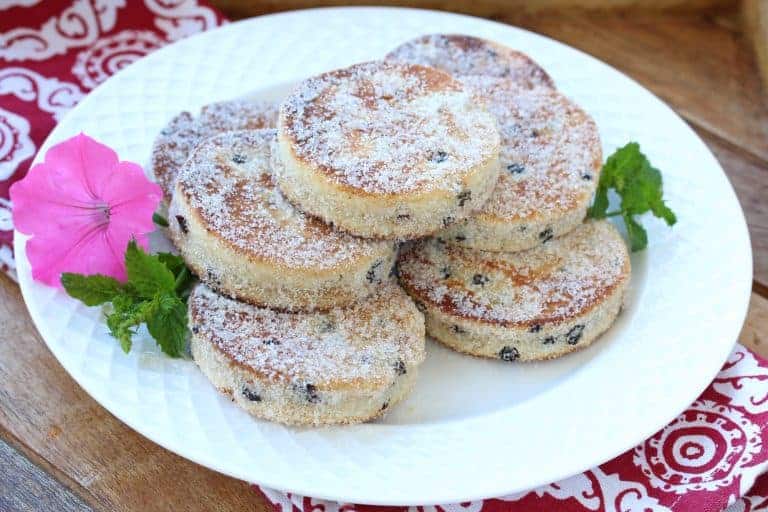
What Are Welsh Cakes?
Welsh cakes, also known as bakestones or “picau ar y maen” in the Welsh language, are popular, traditional Welsh baked goods that are flat, round, and resemble griddle scones. They are traditionally made from flour, lard, sugar, and dried currants and often a hint of warming spices like cinnamon and mace. They’re cooked on a griddle or heavy skillet which gives them their characteristic slightly crispy exterior while keeping the interior soft and meltingly tender. Once cooked they’re coated in sugar and served warm. An important and beloved part of Welsh culinary heritage, Welsh cakes are enjoyed as an everyday treat or served on special occasions like St. David’s Day.
A Brief Introduction to Wales
Before we get to the recipe, let’s talk just briefly about the beautiful country that is home to these delicious Welsh Cakes. Wales is a breathtakingly scenic country with mountainous national parks, glacial landforms, rugged coastlines, some of the most striking fortresses in the world, picturesque villages, and steeped in a rich Celtic culture.
And then of course there is the Welsh language which is near maddening to anyone who can’t speak it (99.999% of the world). Yet even the mind-boggling, tongue-twisting language is an endearing aspect of this beautiful country.

I visited Wales regularly during the 6 years I lived in England and my husband also lived in Wales for nearly a year as a young adult. There’s a small village in Wales that has the longest place name in the UK and second longest in the world. Todd prides himself in being able to say the name, all 58 letters, at break-neck speed and without even the slightest hiccup: Llanfairpwllgwyngyllgogerychwyrndrobwllllantysiliogogogoch.
And just in case you don’t believe me, we visited the village this Summer and I took a picture of the sign:
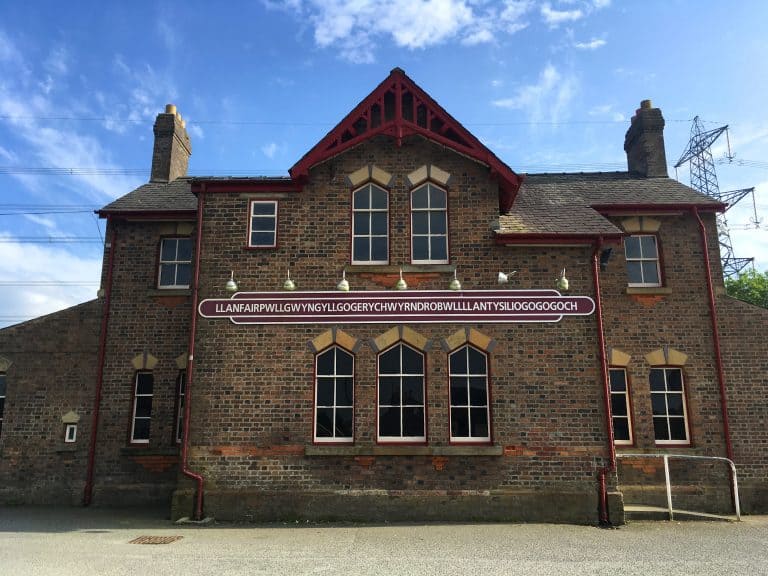
So you have these charming quirks in Wales and then you also have the jaw-dropping, awe-inspiring landscapes and architecture. Todd and I both absolutely love Wales and just got back from a recent vacation there with our kids, focusing this time on North Wales. Here are just few representative pictures of the area.
Below left: The Great Orme. Below right (top and bottom): Snowdonia National Park.

Below are a few of Wales’ most striking and famous castles, all built by Edward I in the 13th century.
Below top left: Caernarfon Castle, where historically the Prince of Wales was crowned and that tradition was resumed with Prince Charles. Below top right: View from Harlech Castle.
Below bottom left: Beaumaris Castle, considered the finest textbook example concentric castle design in the world. Below bottom right: Harlech Castle, also considered an example of the finest medieval castle designs in the world.
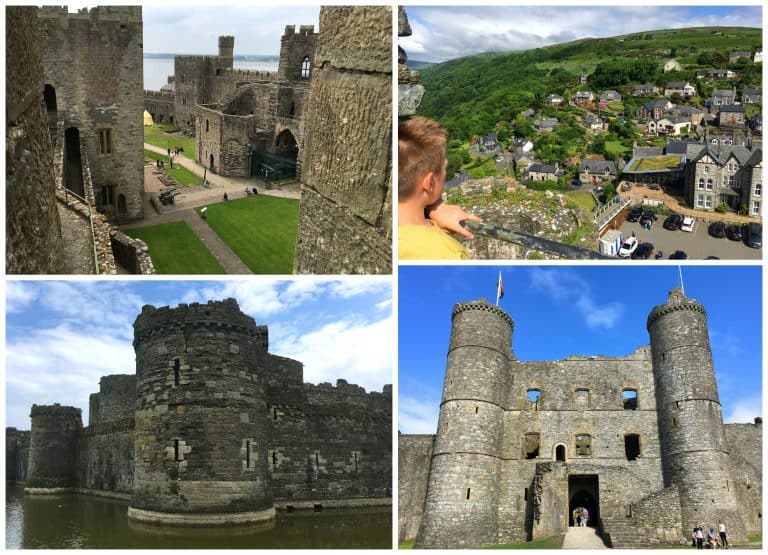
Below: Conwy Castle, considered one of the finest defensive castle designs in the world.
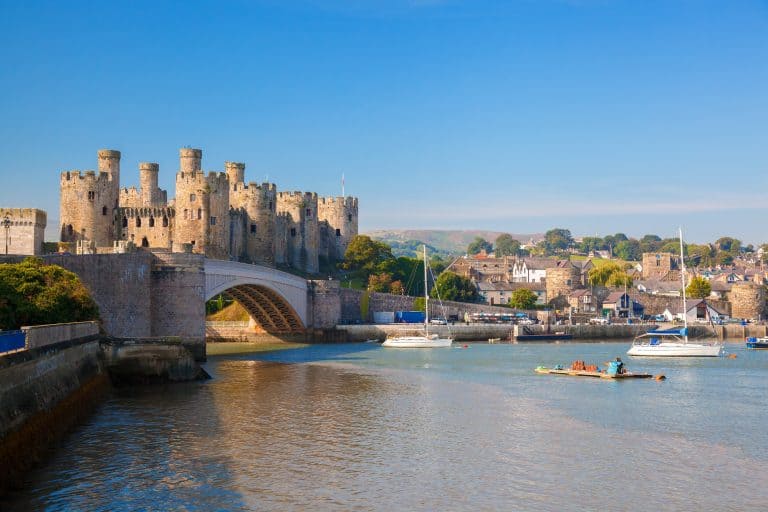
The Killebrew’s at Beaumaris Castle.
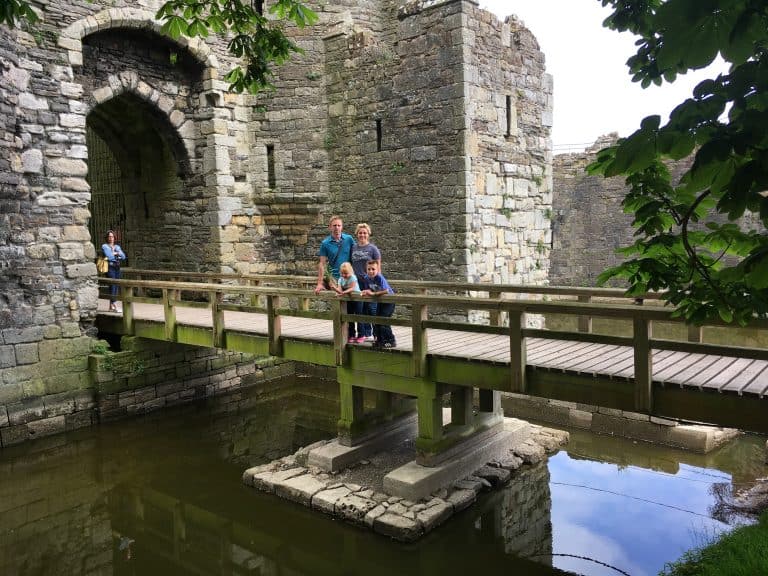
Wales also has a special place in my heart because it’s home to many of my ancestors. My great grandparents on my father’s maternal side were from South Wales and I also have a long line Welsh ancestry in North Wales that goes back to Roman times.
It was my great-grandparents, the Thomas Family from Glamorganshire, Wales, who immigrated to the United States, to Utah, in the late 19th century.
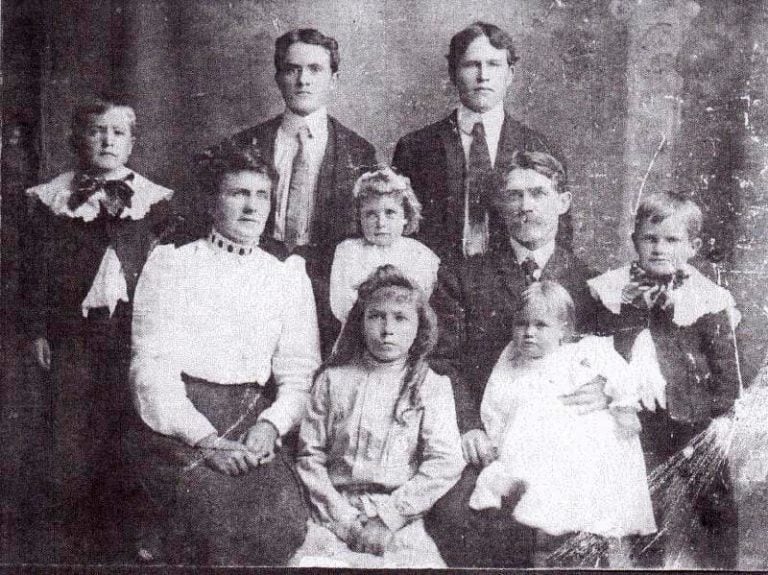
I’ve always wished some of my great grandmothers would have left some journals or recipes to pass down. What a treasure that would be! Nevertheless, I like to imagine my Welsh great-grandmother, Dinah, making these Welsh cakes in her kitchen and her children enjoying them hot off the griddle and dusted in sugar.
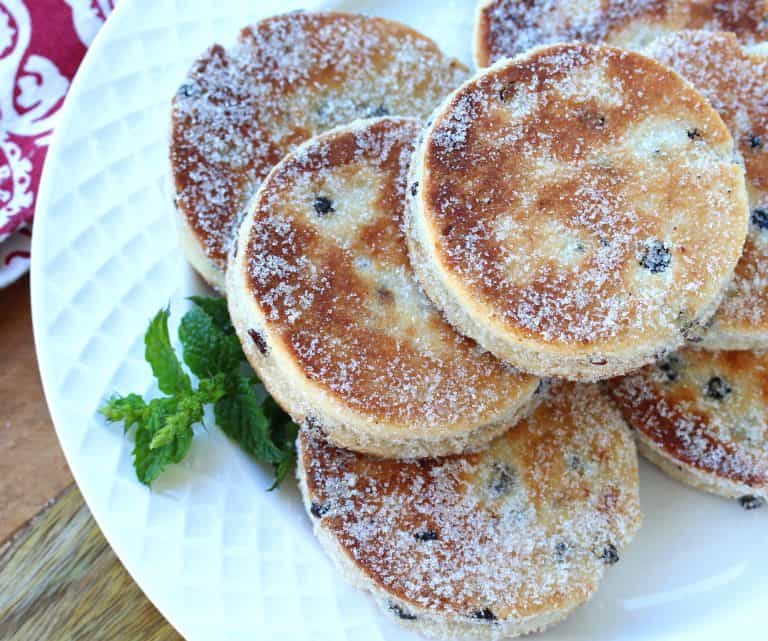
So in honor of the beautiful country of Wales and my Welsh heritage, I’m sharing a very authentic recipe for traditional Welsh Cakes. In Wales these are also known as “bakestones” because traditionally they were cooked on a bakestone which is a cast iron griddle that was placed on the fire or stovetop.
If you’ve never had Welsh Cakes before, I think you’ll agree once you try them that they’re quite different from anything you’ve had before. With their unforgettably flaky, tender, almost melt-in-your-mouth texture that’s punctuated with sweet currants and laced with a wonderful hint of mace, Welsh cakes are simply irresistible.
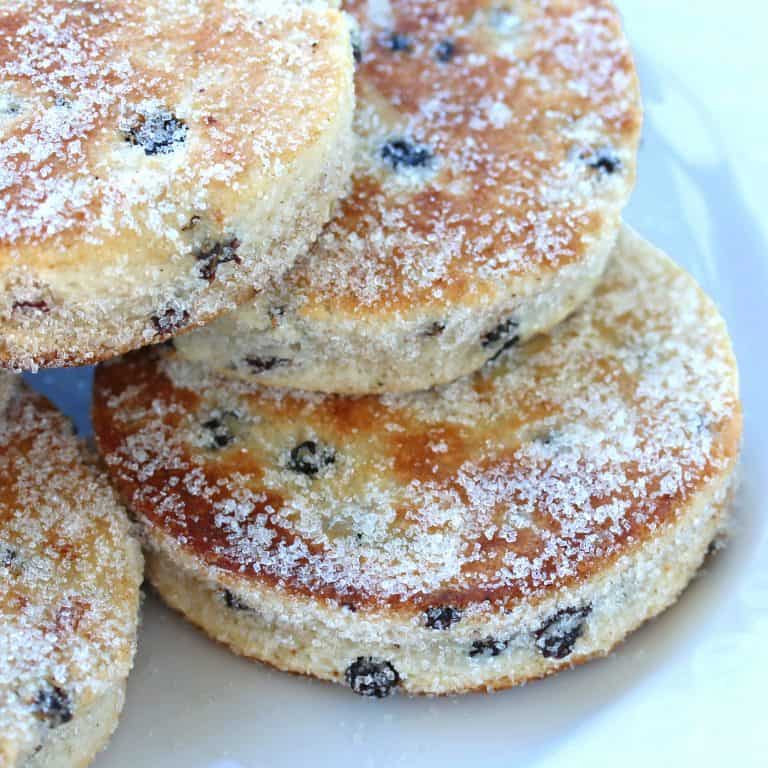
And if you have had Welsh cakes before but your opinion (whether or good or bad) is based solely on store-bought ones, set that opinion aside because I promise you you’ll form a whole new opinion once you’ve tried homemade ones. I’ve had store-bought Welsh cakes on a couple of occasions and I don’t care for them.
But…HOMEMADE…that’s an entirely different story. I am IN LOVE with these traditional homemade Welsh cakes!! Let me say it again: NOTHING compares to the traditional homemade version of these cakes using real lard and mace! They are FABULOUS. Just trust me on this enough to give them a try.
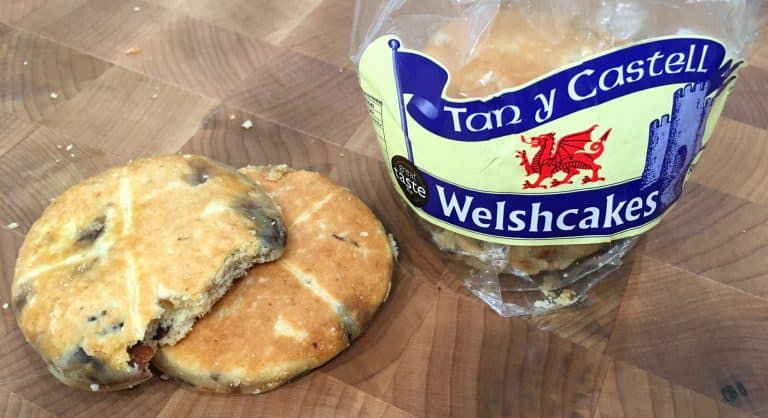
How to Make Welsh Cakes
Use lard. Do not substitute with additional butter. Lard makes ALL the difference in the texture. I repeat: Lard makes ALL the difference in the texture. I highly recommend making your own lard – it’s super easy! Learn How to Make Lard.
Use dried currants. In spite of their name, they’re actually not dried currants at all but rather a variety of raisin known as zante raisins. They’re much smaller than regular raisins, not as cloyingly sweet, and are firmer in texture (regular raisins will be too large and too mushy in these). Dried currants are a staple in traditional British baking and a must for making Welsh cakes.
Use mace. Don’t substitute nutmeg. Mace is a wonderfully aromatic and flavorful spice that was commonly used generations ago but is unfortunately less common today. Its really adds a special and nostalgic touch of old-fashioned flavor.
Use caster sugar. This is also critical for the texture. Since these Welsh cakes are cooked pretty quickly, regular granulated sugar will not have time to dissolve and the texture will be grittier as opposed to that smooth, almost melt-in-your mouth consistency we’re after. Caster sugar is ultra-fine sugar and dissolves very quickly. You can buy caster sugar or very simply make your own by running regular sugar through the blender until very fine. Do NOT use powdered sugar – it contains cornstarch and is not the same thing.
Traditional Welsh Cakes Recipe
Let’s get started!
In a bowl combine the flour, sugar, baking powder, salt, mace and cinnamon. Mix in the lard and butter using your fingers or a food processor until the mixture resembles coarse crumbs.
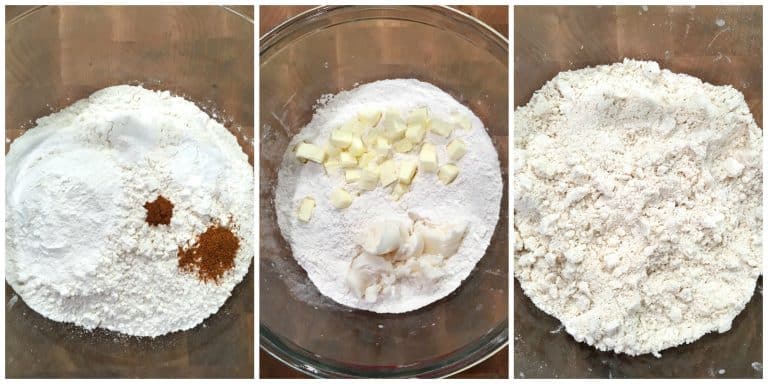
Add the currants and stir to combine. Add the beaten egg and work it into the mixture adding a little milk as needed until you have a soft dough. It should not be wet or sticky.
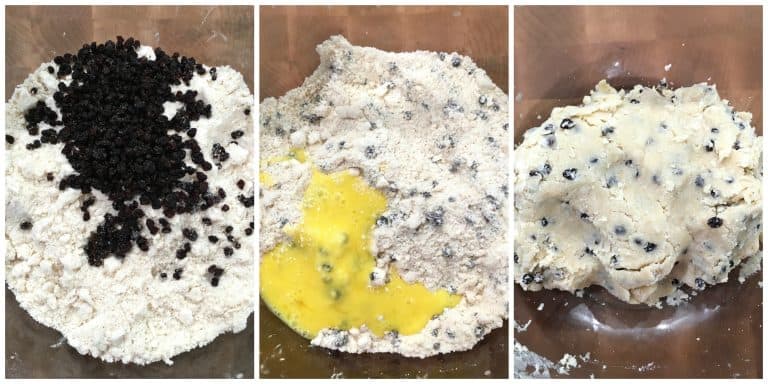
Wrap the dough and refrigerate for 30 minutes. (Dough can be made well in advance and chilled until ready to use.)
Roll the dough out onto a floured or non-stick surface about 1/4 inch thick. Cut out rounds using a biscuit cutter.
Gather up the scraps, knead together and roll out again to cut the remaining rounds.
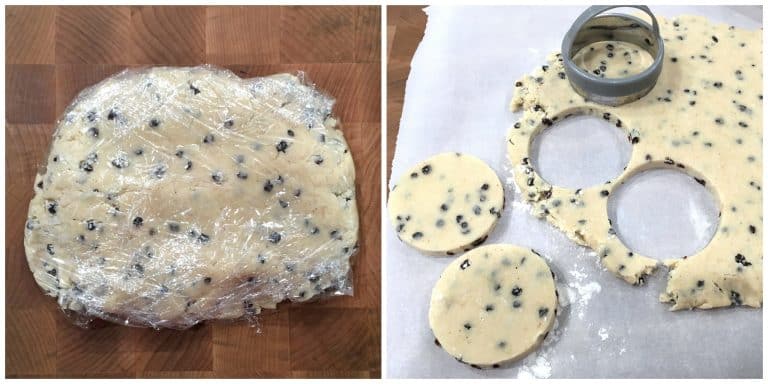
Heat and lightly butter a cast iron pan over medium heat. (I use and love my Lodge cast iron pan for these Welsh Cakes.)
Add the cakes and cook on each side until lightly browned, about 3-4 minutes (lower the heat if needed to prevent the outside from burning before the interior is done).
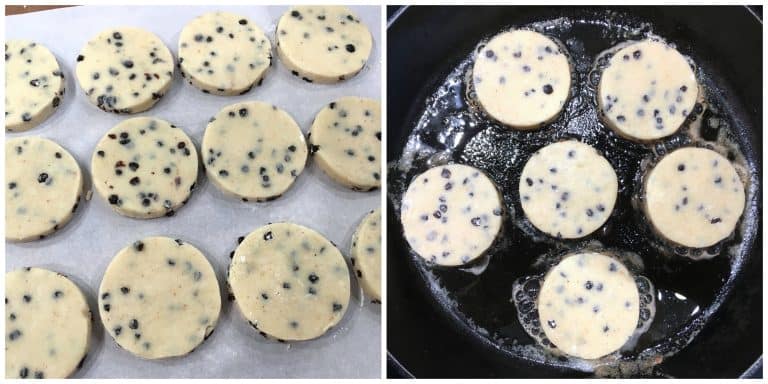
Once the Welsh cakes are done, remove them from the pan and let them cool for a minute.
While the Welsh cakes are still warm, place them in a small bowl of sugar to coat all sides.
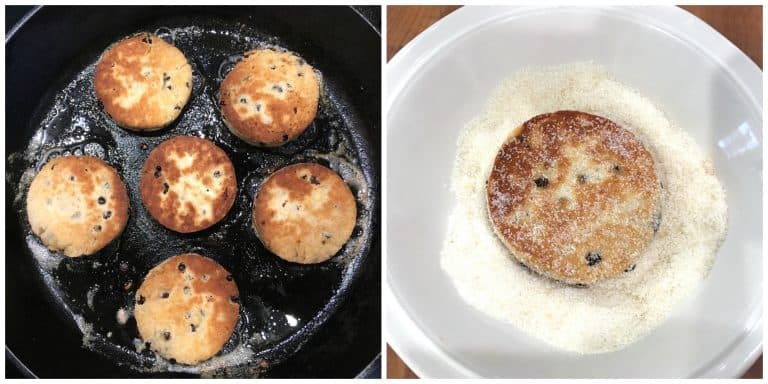
Best eaten while a little warm. Reheat Welsh Cakes in a pan, toaster, or warmed oven (or if in a hurry, in the microwave for a few seconds).
Enjoy!
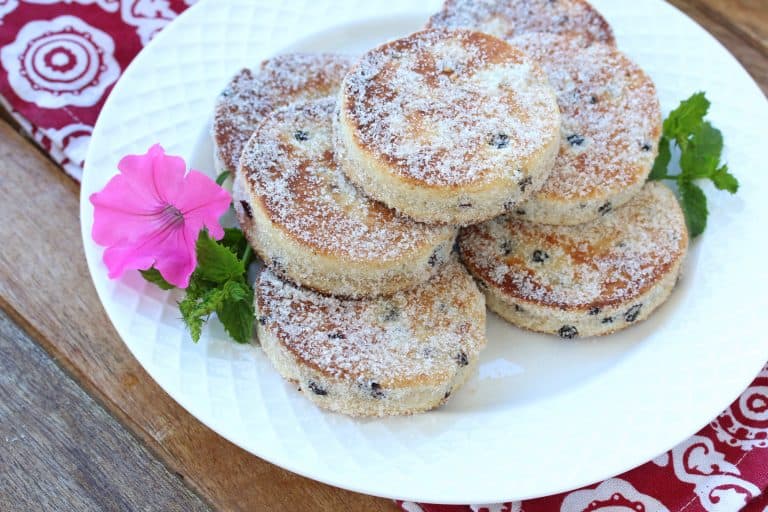
For more traditional Welsh and British bakes be sure to try my:
- Bara Brith
- Treacle Tart
- Sticky Toffee Pudding
- Spotted Dick
- Chelsea Buns
- Cornish Fairings
- Victoria Sponge Cake
- Hot Cross Buns
- Mince Pies
- Lardy Cake
- Scottish Shortbread
- Flapjacks
- Parkin
- Eccles Cakes
- Crumpets
Save This Recipe
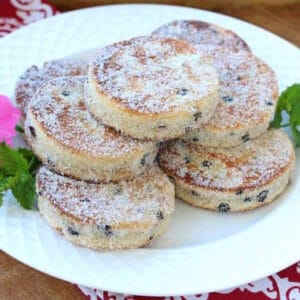
Traditional Welsh Cakes
Ingredients
- 2 cups all-purpose flour
- 1/3 cup caster sugar (do not substitute) (to make your own, pulse granulated sugar in a blender until ultra fine. Do NOT use powdered sugar)
- 1 teaspoon baking powder
- 1/2 teaspoon ground mace ,(a highly fragrant, flavorful spice used in a lot of traditional baking. STRONGLY recommended but can substitute nutmeg if necessary)
- 1/4 teaspoon salt
- 1/8 teaspoon ground cinnamon
- 2 ounces lard , chilled (about 4 tablespoons) NOTE: Lard is critical for the wonderful texture of Welsh Cakes
- How To Render Your Own Lard! (it’s WAY cheaper and better)
- 2 ounces butter , chilled and cubed
- 1 large egg , lightly beaten
- 1/2 cup dried currants
- 2-3 tablespoons milk
- granulated sugar for finished cakes
Instructions
- In a bowl combine the flour, sugar, baking powder, salt, mace and cinnamon. Mix in the lard and butter using your fingers or a food processor until the mixture resembles coarse crumbs. Add the currants and stir to combine. Add the beaten egg and work it into the mixture adding a little milk as needed until you have a soft dough. It should not be wet or sticky. Wrap the dough and refrigerate for 30 minutes. (Dough can be made well in advance and chilled until ready to use.)
- Roll the dough out onto a floured or non-stick surface about 1/4 inch thick. Cut out rounds using a biscuit cutter. Gather up the scraps, knead together and roll out again to cut the remaining rounds.
- Heat and lightly butter a cast iron pan over medium heat (I lightly butter it to later help the sugar adhere to the cakes when they’re sprinkled). Add the cakes and cook on each side until lightly browned, about 3-4 minutes (lower the heat if needed to prevent the outside from burning before the interior is done).
- Let them cool for about a minute. While the Welsh cakes are still warm, place them in a small bowl of sugar to coat all sides. Best eaten while a little warm. Reheat Welsh Cakes in a pan, toaster, or warmed oven (or if in a hurry, in the microwave for a few seconds).
Nutrition
Originally published on The Daring Gourmet October 30, 2018



















Llongyfarchiadau! A lovely recipe for a great bit of Wales. The use of mace is welcome, though surprising, given that I believe it to have always been far mor expensive than nutmeg, but I’m sure it will enhance the flavour. Keep loving Wales. Cymru am byth!
Hi Kimberly. I am excited to try this recipe! I decided to look up welsh cakes today because of my ancestry. I was excited to see your Ancestry because my great great grandparents, the Perkins and Williams also lived in Glamorganshire, Wales, and immigrated to the United States (to Utah), in the late 19th century! They were part of the hole in the rock pioneers that settled in southern Utah. It is interesting that I clicked on your recipe I made all the others. I am going to assume that our families knew each other since Glamorganshire was not a huge city. Small world.
I should have proofread that first. I did not make all the others. It was supposed to say amid all the others. 😂
Hi Tara! We were just in South Wales, including Glamorganshire, last month on our family vacation and visited a number of towns where my ancestors were from. Who knows, maybe our grandparents came from the same town in Glamorganshire :) This particular set of grandparents I mention in my blog post settled in Emery County, UT. I also have great+ grandparents from North Wales, one of whom immigrated to Utah and became the master stone mason of the Salt Lake, Manti and St. George temples (Edward Lloyd Parry). We visited North Wales last year and this year focused on the south. Both areas are breathtaking but we particularly enjoyed South Wales. These Welsh Cakes are one of my favorite traditional goodies from Wales, I hope you enjoy them!
I had no yeast at the cottage and wanted to make Struwen for breakfast, this was a fun recipe and easy to make. Thank you for sharing.
I’m so glad you enjoyed them, Dusty, thank you!
Llanfairpwllgwyngyllgogerychwyrndrobwllllantysiliogogogoch!
OMG I think I busted a ribbed, laughing in a failed effort at pronouncing that!
Your Welsh cakes look divine. I must make them. Happy holidays!
LOL, Coco! It’s pretty fun stuff :) Thank you and I hope you enjoy them!
wow I love making these for my husband ,but it’s a total different recipe that I have,but for sure will try Your recipe…My husband is from Newport Wales…. :)
Excellent, Elizabeth, please let us know what you think once you’ve tried them!
My Nana use to make welsh cakes–with regular sugar, no lard and nutmeg. I have to try this version–the true version.
Thanks!
You really do, Catherine! The finer sugar and the lard are both key to the texture and the mace really adds a touch of magic to it.
Why the chilled, cubed butter? It doesn’t figure in the recipe, except for the cooking surface. Or am I missing something?
Hi Paul, sorry for the confusion, the butter is added at the same time as the lard.
How do you reheat them?
Hi Christina, you can reheat them in the pan, a toaster or warmed oven. Or if I’m in a hurry I’ll pop them in the microwave for a few seconds.
AND…if we could all master supercalifragilisticexpialidocious…why shouldn’t he be able to pronounce it…good on, tho. looks like not quite enuf vowels! hhahaha
Ha! Believe me, supercalifragilisticexpialidocious has nothing on Llanfairpwllgwyngyllgogerychwyrndrobwllllantysiliogogogoch! Seriously, google “how to prounounce Llanfairpwllgwyngyllgogerychwyrndrobwllllantysiliogogogoch” and listen to it. It’s like speaking with a mouth full of cotton, marbles, and sticky toffee all mixed together…oh, and some Welsh cakes too! ;)
You must watch “Keeping Faith” on Acorn (Like Netflix streaming, but British and cheaper by almost half). Just finished the first series today and now I want to go, so it’s funny that you posted this today!!! Must be a God thing!!! Maybe Christmas?!?!?! Hmmmmm
Haha! We use Acorn to watch some other British shows we like, we’ll definitely check out “Keeping Faith,” thanks for the recommendation, Maris!
My mother-in-law was from Cilfyndd, South Wales ,but moved to London during the war. My husband and I met in London back in the early seventies. Married and moved to the states (Massachusetts). She used to make Welsh cakes and ship them to us every Christmas. We loved them and so did our three girls. I’ve made them before, but could never get them to taste like hers. I am so excited to try your recipe for Christmas this year!!! Thank you
What a wonderful heritage, Doreen, thanks for sharing. I’m equally excited for you to give these a try, please let us know what you think!
So how what would you call these…cookie, cake, bread ??
I have to make these ASAP, they just look so wonderful and those pictures are amazing.. just beautiful
Thank You for sharing
Thanks, Abby! They’re called Welsh “cakes” but in Wales are also often referred to as “bakestones” or “griddle cakes.” Yes, you need to try them!! :)
Your photos from the trip are stunning! I need to make these cakes soon. They look delicious!
These would disappear in our house!
You are right, of course, there are so many variables. I have had a similar conversation with my internet friend Carolyn of http://tastingspoons.com/ some years ago, who had tasted the cakes in Wales when on a visit from California, when I questioned the use of eggs in the recipe. I have had to accept the realisation that my memory is very faulty!
Have a wonderful weekend my dear.
Thanks, Toffeeapple, you have a wonderful weekend, too! :)